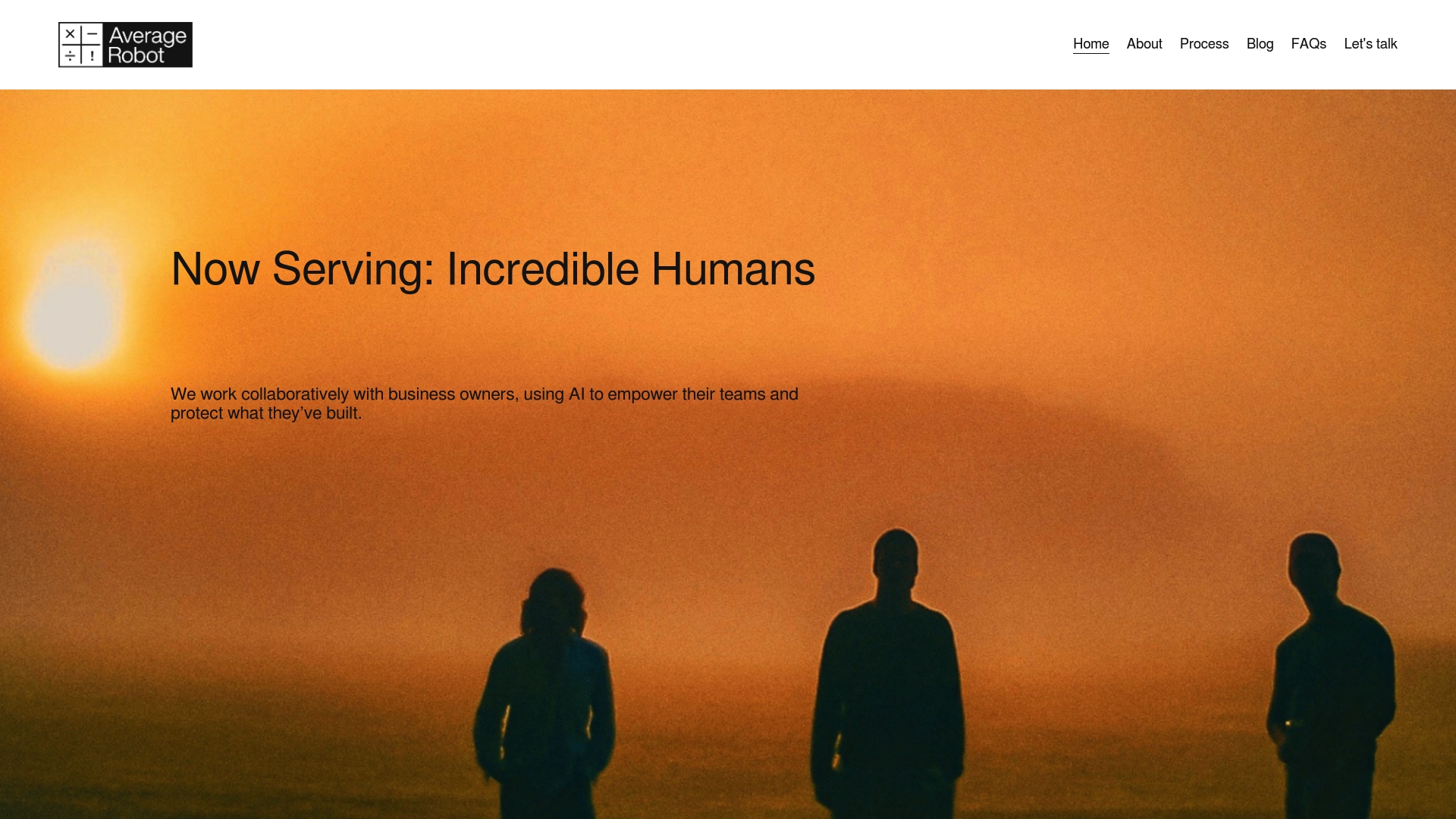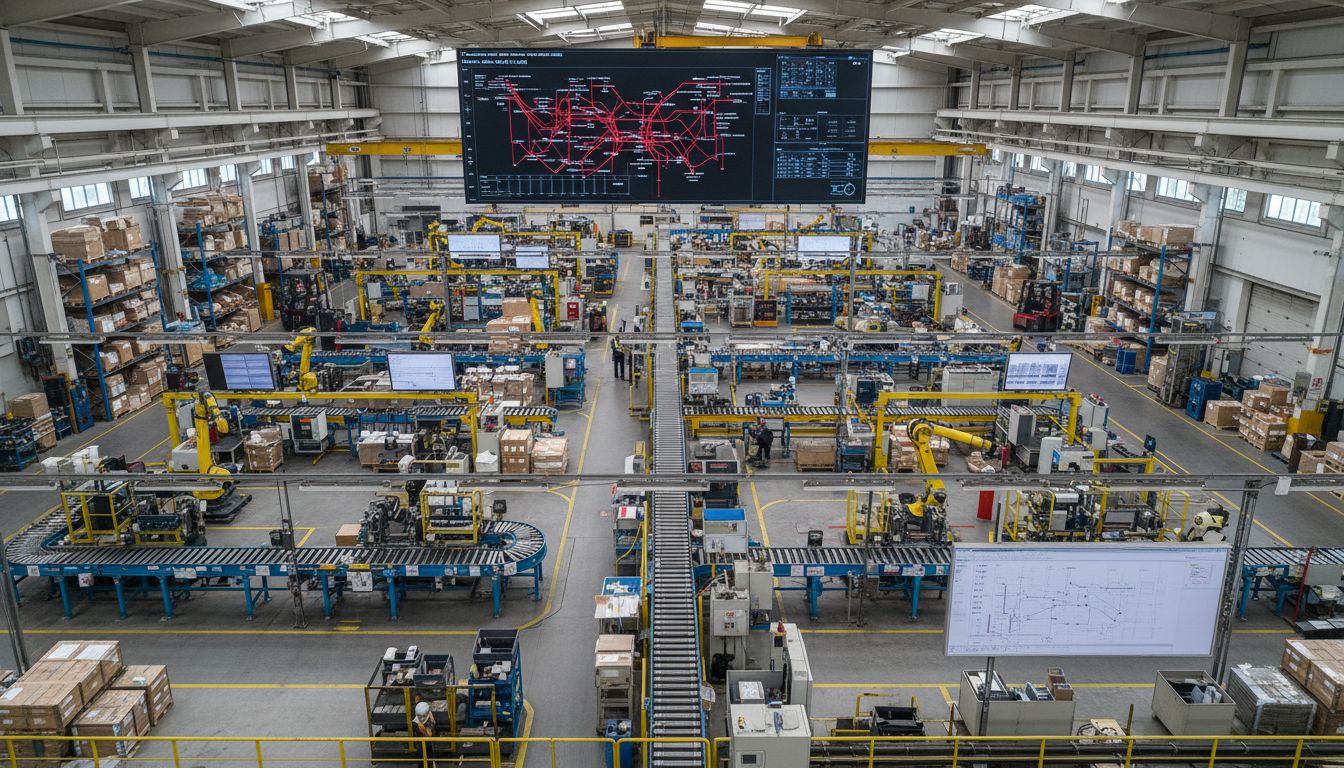7 Types of AI Collaboration for Business Success

AI collaboration is changing how businesses solve problems and unlock new opportunities. Picture this. Over 70 percent of organizations now use AI tools to boost how their teams communicate and work together. Most people expect machines to take over jobs or replace humans completely. That is not what is actually happening. The real breakthrough comes when humans and AI team up, using their unique strengths as partners rather than competitors.
Table of Contents
- Understanding AI Collaboration Concepts
- Human-AI Teaming: Working Together
- Cloud-Based AI Collaboration Tools
- AI-Powered Communication Platforms
- Collaborative Robotics in the Workspace
- Data Sharing and AI Collaboration
- Building a Culture of AI Collaboration
Quick Summary
| Takeaway | Explanation |
|---|---|
| AI enhances human capabilities, not replace them | AI collaboration focuses on empowering workers to handle more strategic tasks instead of automating their jobs away. |
| Build transparent workflows for AI teamwork | Clear communication is essential for integrating AI within teams to ensure everyone understands their roles and contributions. |
| Prioritize continuous learning in AI integration | Foster an environment where ongoing training helps both AI and human team members adapt and improve together. |
| Evaluate AI tools based on organizational needs | When selecting AI technology, consider factors like data privacy, user experience, and integration with existing systems. |
| Create a culture of psychological safety for AI collaboration | Encourage experimentation with AI technologies while ensuring team members feel safe to share ideas and challenge norms. |
1: Understanding AI Collaboration Concepts
AI collaboration represents a strategic approach where humans and artificial intelligence work together to achieve business objectives more effectively. At its core, this concept moves beyond simple task automation to create synergistic partnerships that leverage the unique strengths of both human intelligence and machine capabilities.
In modern business environments, AI collaboration is not about replacing human workers but empowering them to perform more complex, creative, and strategic tasks. According to the National Science Foundation’s EducateAI initiative, successful AI integration requires understanding collaborative models that enhance human potential.
Key characteristics of effective AI collaboration include:
- Complementary Skills: AI handles data processing and pattern recognition while humans provide context, emotional intelligence, and strategic decision making
- Transparent Workflows: Clear communication channels between human teams and AI systems
- Continuous Learning: Adaptive systems that improve through human feedback and interaction
Businesses embracing AI collaboration recognize that the most powerful solutions emerge when technology amplifies human capabilities rather than attempting to replace them. This approach requires a strategic mindset that views AI as a collaborative tool, not a standalone solution.
For business owners interested in exploring this transformative approach, read our guide on owner-led AI adoption strategies that provide practical insights into implementing collaborative AI models effectively.
2: Human-AI Teaming: Working Together
Human-AI teaming transforms traditional workplace dynamics by creating cooperative ecosystems where artificial intelligence and human professionals complement each other’s capabilities. This collaborative approach goes beyond simple task delegation, focusing on building symbiotic relationships that amplify organizational performance and innovation.
According to research from the Software Engineering Institute at Carnegie Mellon University, successful human-AI teaming requires careful consideration of several critical factors:
- Clear Problem Definition: Establishing precise objectives and expectations for both human and AI team members
- Comprehensive Integration: Designing workflows that seamlessly incorporate AI capabilities without disrupting existing processes
- Continuous Learning: Creating feedback mechanisms that allow both humans and AI systems to adapt and improve
Effective human-AI teams recognize that intelligence is not a competition but a collaborative journey. AI brings computational power, pattern recognition, and rapid data processing, while humans contribute creativity, emotional intelligence, ethical judgment, and complex strategic thinking.
Business leaders must approach AI teaming as a strategic partnership, understanding that the goal is not replacement but enhancement. This means investing in training, developing transparent communication protocols, and creating environments where AI tools are seen as supportive teammates rather than threatening technologies.
For business owners seeking to develop robust human-AI collaboration strategies, explore our AI integration roadmap for business leaders to gain deeper insights into building successful, trust-based AI teams that drive organizational success.
3: Cloud-Based AI Collaboration Tools
Cloud-based AI collaboration tools represent a transformative technology that enables businesses to leverage distributed computing power and advanced artificial intelligence capabilities without significant upfront infrastructure investments. These platforms provide flexible, scalable solutions that allow teams to work seamlessly across geographical boundaries and technological environments.
According to the National Science Foundation’s CloudBank initiative, cloud computing platforms are revolutionizing how organizations access and utilize advanced technological resources. These tools offer numerous advantages for businesses seeking to implement AI collaboration strategies:
- Scalability: Easily adjust computational resources based on project requirements
- Accessibility: Enable team members to collaborate from multiple locations and devices
- Cost Efficiency: Reduce hardware and maintenance expenses associated with traditional computing infrastructure
The most effective cloud-based AI collaboration tools integrate multiple technological capabilities, providing comprehensive platforms that support data analysis, machine learning model development, real-time collaboration, and secure information sharing. These tools typically include features like shared workspaces, version control, integrated development environments, and advanced security protocols.
Business leaders must carefully evaluate cloud-based AI tools based on their specific organizational needs, considering factors such as data privacy, integration capabilities, user experience, and alignment with existing technological ecosystems. The goal is not just adopting technology but creating a seamless, productive collaborative environment.
Explore our strategic guide for navigating AI adoption challenges to gain deeper insights into selecting the right cloud-based AI collaboration tools for your business’s unique requirements.
4: AI-Powered Communication Platforms
AI-powered communication platforms represent a revolutionary approach to workplace interaction, transforming how businesses connect, collaborate, and communicate across diverse environments. These intelligent systems go beyond traditional messaging tools by integrating advanced natural language processing, sentiment analysis, and contextual understanding to enhance team communication.
According to EDUCAUSE QuickPoll research, over 70% of organizations are now leveraging AI tools to improve communication efficiency and effectiveness. These platforms offer sophisticated features that dramatically improve organizational communication:
- Real-time Translation: Breaking down language barriers in global teams
- Intelligent Response Suggestions: Helping draft more effective and nuanced communications
- Sentiment Analysis: Providing insights into team emotional dynamics and communication health
The most advanced AI communication platforms function as intelligent collaboration assistants, capable of summarizing complex conversations, identifying key action items, and even predicting potential communication challenges before they emerge. By analyzing communication patterns, these tools help teams develop more transparent and productive interaction strategies.
Business leaders must recognize that AI-powered communication platforms are not about replacing human interaction but augmenting and improving communication quality. The goal is creating more meaningful, efficient, and insightful exchanges that drive organizational performance.
Discover how AI can future-proof your business communication strategies and unlock new levels of team collaboration and effectiveness.
5: Collaborative Robotics in the Workspace
Collaborative robotics represents a transformative approach to workplace integration, where intelligent machines work alongside human employees to enhance productivity, safety, and operational efficiency. Unlike traditional industrial robots that operate in isolation, collaborative robots are designed to interact directly with human workers, adapting to dynamic work environments and supporting complex tasks.
According to research from the University of Coimbra, collaborative robots can operate in three distinct modes: coexistence, cooperation, and collaboration. Each mode represents a progressively more sophisticated level of human-robot interaction:
- Coexistence: Robots and humans share physical space with minimal direct interaction
- Cooperation: Structured task sharing with predefined roles and boundaries
- Collaboration: Dynamic, adaptive interactions where robots and humans mutually adjust and support each other
The most advanced collaborative robots are equipped with sophisticated sensor technologies that enable real-time environmental monitoring, collision avoidance, and adaptive movement. These systems can interpret human gestures, understand contextual cues, and make split-second decisions to ensure workplace safety and optimize task performance.
Businesses implementing collaborative robotics must focus on comprehensive integration strategies that prioritize human-robot compatibility. This involves not just technological implementation but also workforce training, cultural adaptation, and continuous performance optimization.
Explore our owner-led AI adoption strategies to understand how collaborative robotics can transform your workplace productivity and create more engaging, efficient work environments.
6: Data Sharing and AI Collaboration
Data sharing and AI collaboration represent a strategic approach to leveraging collective intelligence, enabling organizations to unlock insights and capabilities beyond individual technological capacities. This collaborative model transforms data from a competitive asset into a cooperative resource that drives innovation and collective problem solving.
According to the OECD’s report on data sharing in the AI era, effective data collaboration requires sophisticated governance frameworks that balance accessibility with privacy and ethical considerations:
- Secure Data Protocols: Implementing robust encryption and access management
- Transparent Sharing Agreements: Establishing clear guidelines for data usage and attribution
- Ethical AI Frameworks: Ensuring responsible and unbiased data interpretation
Successful data sharing strategies recognize that raw information is not enough. Modern AI collaboration demands contextual understanding, where data is not just transferred but intelligently interpreted across organizational boundaries. This approach requires sophisticated machine learning models capable of understanding nuanced information patterns and extracting meaningful insights.
Business leaders must develop comprehensive data collaboration strategies that prioritize security, compliance, and mutual value creation. This involves creating cross-organizational data ecosystems where information flows securely and intelligently, driving collective innovation and competitive advantage.
Learn more about strategic AI implementation for your business and discover how intelligent data collaboration can transform your organizational capabilities.
7: Building a Culture of AI Collaboration
Building a culture of AI collaboration requires a strategic, human-centered approach that transforms technological adoption from a technical challenge into an organizational mindset. This involves creating environments where artificial intelligence is viewed as a collaborative partner rather than a replacement for human talent.
According to Johns Hopkins University’s research on collaborative team cultures, successful AI integration demands intentional organizational design that prioritizes human potential and technological empowerment:
- Psychological Safety: Creating environments where team members feel comfortable experimenting with AI technologies
- Continuous Learning: Developing ongoing training programs that demystify AI capabilities
- Transparent Communication: Establishing clear expectations about AI’s role in organizational workflows
The most effective AI collaboration cultures recognize that technology is a tool, not a solution. Business leaders must actively engage employees in AI implementation, encouraging them to see these technologies as amplifiers of human creativity and problem-solving capabilities. This means moving beyond mere technology adoption to creating meaningful human-AI partnerships.
Successful implementation requires leadership that views AI as a collaborative intelligence platform. This involves designing workflows that highlight human judgment, emotional intelligence, and strategic thinking while leveraging AI’s computational strengths. The goal is not technological replacement but intelligent augmentation of human capabilities.
Below is a comprehensive table summarizing the seven types of AI collaboration for business success covered throughout the article.
| AI Collaboration Type | Key Features & Focus | Main Benefits for Business |
|---|---|---|
| Understanding AI Collaboration Concepts | Human-AI partnerships; complementary skills; transparent workflows; continuous learning | Empowers human workers; amplifies strengths; strategic integration |
| Human-AI Teaming: Working Together | Cooperative ecosystems; clear objectives; integrated workflows; feedback loops | Higher performance; innovation; supports creativity and ethics |
| Cloud-Based AI Collaboration Tools | Distributed computing; multiple integrations; scalable and accessible | Flexible collaboration; reduced costs; supports remote work |
| AI-Powered Communication Platforms | Natural language processing; real-time translation; sentiment analysis | Enhanced team communication; transparency; greater efficiency |
| Collaborative Robotics in the Workspace | Human-robot coexistence, cooperation, or collaboration; adaptive technologies | Improved productivity and safety; augments workforce |
| Data Sharing and AI Collaboration | Secure protocols; transparent agreements; ethical frameworks | Unlocks collective intelligence; drives innovation |
| Building a Culture of AI Collaboration | Psychological safety; ongoing training; transparent expectations | Engaged teams; intelligent tech adoption; trust-based culture |
Discover how to transform your business with strategic AI adoption and create a collaborative culture that empowers your team through intelligent technological integration.
Ready to Transform AI Collaboration into Real Business Growth?
You have seen how the seven types of AI collaboration can revolutionize the way your teams work, communicate, and innovate. But turning these strategies into real results often feels overwhelming due to complex workflows, unclear team roles, or lack of a clear AI roadmap. If you are grappling with how to truly unlock this potential while empowering your people—not replacing them—Average Robot is built for you.

It is time to move from theory to action. Partner with Average Robot to access strategic guidance, proven owner-led AI adoption strategies and customized support that makes AI work for your unique business model. With tailored roadmaps, change management expertise, and hands-on team collaboration tools, we help you automate what matters and boost business value. Visit https://average-robot.com now and turn your AI collaboration plans into a powerful competitive advantage.
Frequently Asked Questions
What is AI collaboration in business?
AI collaboration refers to the strategic partnership between humans and artificial intelligence, aiming to leverage their unique strengths to achieve business goals more effectively, enhancing productivity and enabling complex decision-making processes.
How do human-AI teams enhance organizational performance?
Human-AI teams enhance performance by creating cooperative ecosystems where AI supports human creativity and emotional intelligence, leading to more efficient workflows and innovative solutions instead of replacing human roles.
What are cloud-based AI collaboration tools?
Cloud-based AI collaboration tools are platforms that provide distributed computing power and AI capabilities, enabling teams to collaborate seamlessly across locations without the need for significant upfront infrastructure investment.
What role does data sharing play in AI collaboration?
Data sharing is vital in AI collaboration as it transforms data into a cooperative resource, allowing organizations to unlock collective insights, driving innovation while ensuring ethical and secure data handling.
Recommended
- Owner-Led AI Adoption Tips for Small Businesses — Average Robot
- Owner-Led AI Adoption Tips for Small Businesses — Average Robot
- About | Discover Opportunities - Schedule Today — Average Robot
- About | Discover Opportunities - Schedule Today — Average Robot
- The Impact of AI on SEO in 2025: Key Changes for Businesses
- Artificial Intelligence Speakers United Kingdom




